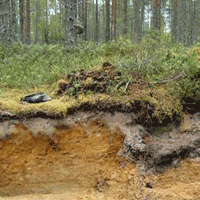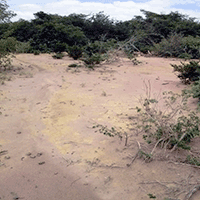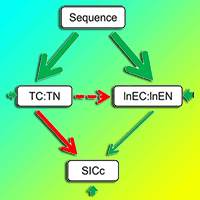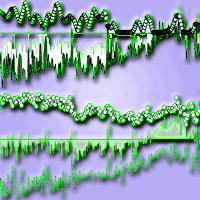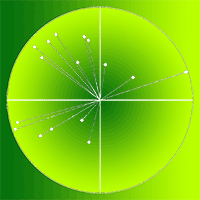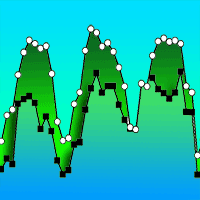Carbon sources and sinks have been widely scrutinized over the last ten years as a result of the Kyoto Protocol. In this paper we added a new concept (standardized reference depth, DSR) to the current calculation method in order to assess and compare the soil organic carbon (SOC) storage changes due to three major land use changes with a certain historical relationship (from primary rain forest to fallow land to natural secondary forest and finally to rubber plantations - Hevea brasiliensis) in a northern tropical ecosystem in southwest China. Over 30 years, the soil organic carbon storage did not decrease significantly with a land use change from primary rain forest to fallow land (approximately 10.3%). However, it did increase significantly (approximately 49.3%) due to conversions to natural secondary forest and rubber plantations (approximately 41.6%). In this region, the soil carbon sequestration at rubber plantations is similar to that of natural secondary forests. Compared with the modified method, the current method overestimated carbon storage on fallow land by 8.8% more than the actual storage (calculated reference depth of 13.9 cm, Dr - DSR = 13.9, without the reference depth standardization process), overestimated carbon storage at rubber plantations by 3.6% (calculated reference depth of 4.9 cm), and underestimated the natural secondary forest carbon storage by 6.4% (calculated reference depth of 9.7 cm). Thus, the modified process using the standardized reference depth for the current method is necessary for the evolution and comparison of soil carbon or other nutrient storage changes.
Keywords
, , , , ,
Citation
Li Y, Xia Y, Lei Y, Deng Y, Chen H, Sha L, Cao M, Deng X (2015). Estimating changes in soil organic carbon storage due to land use changes using a modified calculation method. iForest 8: 45-52. - doi: 10.3832/ifor1151-007
Academic Editor
Gianfranco Minotta
Paper history
Received: Oct 14, 2013
Accepted: Apr 23, 2014
First online: Jun 17, 2014
Publication Date: Feb 02, 2015
Publication Time: 1.83 months
© SISEF - The Italian Society of Silviculture and Forest Ecology 2015
Open Access
This article is distributed under the terms of the Creative Commons Attribution-Non Commercial 4.0 International (https://creativecommons.org/licenses/by-nc/4.0/), which permits unrestricted use, distribution, and reproduction in any medium, provided you give appropriate credit to the original author(s) and the source, provide a link to the Creative Commons license, and indicate if changes were made.

Breakdown by View Type
(Waiting for server response...)
Article Usage
Total Article Views: 60727
(from publication date up to now)
Breakdown by View Type
HTML Page Views: 49445
Abstract Page Views: 4700
PDF Downloads: 5064
Citation/Reference Downloads: 35
XML Downloads: 1483
Web Metrics
Days since publication: 4204
Overall contacts: 60727
Avg. contacts per week: 101.12
Article Citations
Article citations are based on data periodically collected from the Clarivate Web of Science web site
(last update: Mar 2025)
Total number of cites (since 2015): 17
Average cites per year: 1.55
Publication Metrics
by Dimensions ©
Articles citing this article
List of the papers citing this article based on CrossRef Cited-by.
(1)
Barnett TP, Adam JC, Lettenmaier DP (2005)Potential impacts of a warming climate on water availability in snow dominated regions. Nature 438: 303-309.
CrossRef |
Gscholar
(2)
Batjes NH (1996)Total carbon and nitrogen in the soils of the world. European Journal of Soil Science 47: 151-163.
CrossRef |
Gscholar
(3)
Batjes NH, Sombroek WG (1997)Possibilities for carbon sequestration in tropical and subtropical soils. Global Change Biology 3: 161-173.
CrossRef |
Gscholar
(4)
Batjes NH (2000)Effects of mapped variation in soil conditions on estimates of soil carbon and nitrogen stocks for South America. Geoderma 97: 135-144.
CrossRef |
Gscholar
(5)
Brown S, Lugo AE (1990)Tropical secondary forests. Journal of Tropical Ecology 6: 1-32.
CrossRef |
Gscholar
(6)
De Blécourt M, Brumme R, Xu J, Corre MD, Veldkamp E (2013)Soil carbon stocks decrease following conversion of secondary forests to rubber (
Hevea brasiliensis) plantations. PLoS ONE 8(7): e69357.
CrossRef |
Gscholar
(7)
Cao M, Zhang JH, Feng ZL, Deng JW, Deng XB (1996)Tree species composition of a seasonal rain forest in Xishuangbanna, Southwest China. Tropical Ecology 37: 183-192.
Online |
Gscholar
(8)
Chen GS, Yang YS, Xie JS, Guo JF, Gao R, Qian W (2005)Conversion of a natural broad-leafed evergreen forest into pure plantation forests in a subtropical area: effects on carbon storage. Annals of Forest Science 62 (7): 659-668.
CrossRef |
Gscholar
(9)
Duah-Yentumi S, Rønn R, Christensen S (1998)Nutrients limiting microbial growth in a tropical forest soil of Ghana under different management. Applied Soil Ecology 8: 19-24.
CrossRef |
Gscholar
(10)
Ellert BH, Bettany JR (1995)Calculation of organic matter and nutrients stored in soils under contrasting management regimes. Canadian Journal of Soil Science 75: 529-538.
CrossRef |
Gscholar
(11)
FAO (2005)Global forest resources assessment 2005. FAO Forestry Paper 147, FAO, Rome.
Online |
Gscholar
(12)
FAO (2010)Global forest resources assessment 2010. FAO Forestry Paper 163, FAO, Rome.
Online |
Gscholar
(13)
Freier KP, Glaser B, Zech W (2010)Mathematical modeling of soil carbon turnover in natural Podocarpus forest and Eucalyptus plantation in Ethiopia using compound specific δ
13C analysis. Global Change Biology 16: 1487-1502.
CrossRef |
Gscholar
(14)
John B, Yamashita T, Ludwig B, Flessa H (2005)Storage of organic carbon in aggregate and density fractions of silty soils under different types of land use. Geoderma 128: 63-79.
CrossRef |
Gscholar
(15)
Kern JS (1994)Spatial patterns of soil organic carbon in the contiguous United States. Soil Science Society of America Journal 58: 439-455.
CrossRef |
Gscholar
(16)
Laganière J, Angers DA, Paré D (2010)Carbon accumulation in agricultural soils after afforestation: a meta-analysis. Global Change Biology 16: 439-453.
CrossRef |
Gscholar
(17)
Lal R (2002)Soil carbon dynamics in cropland and rangeland. Environmental Pollution 116: 353-362.
CrossRef |
Gscholar
(18)
Lemenih M, Olsson M, Karltun E (2004)Comparison of soil attributes under
Cupressus lusitanica and
Eucalyptus saligna established on abandoned farmlands with continuously cropped farmlands and natural forest in Ethiopia. Forest Ecology and Management 195: 57-67.
CrossRef |
Gscholar
(19)
Lettens S, Van Orshoven J, Van Wesemael B, Muys B (2004)Soil organic and inorganic carbon contents of landscape units in Belgium derived using data from 1950 to 1970. Soil Use Management 20: 40-47.
CrossRef |
Gscholar
(20)
Li HM, Aide TM, Ma YX, Liu WJ, Cao M (2007)Demanding for rubber is causing the loss of high diversity rain forest in SW China. Biodiversity Conservation 16: 1731-1745.
CrossRef |
Gscholar
(21)
Li Y, Deng X, Cao M, Lei Y, Xia Y (2013)Soil restoration potential with corridor replanting engineering in the monoculture rubber plantations of Southwest China. Ecological Engineering 51: 169-177.
CrossRef |
Gscholar
(22)
Liao CZ, Luo YQ, Fang CM, Chen JK, Li B (2012)The effects of plantation practice on soil properties based on the comparison between natural and planted forests: a meta-analysis. Global Ecology and Biogeography 21: 318-327.
CrossRef |
Gscholar
(23)
Liu GS, Jiang NH, Zhang LD, Liu ZL (1996)Soil physical and chemical analysis and description of soil profiles. Standards Press of China, Beijing, China, pp. 5-6, 31-32. [in Chinese]
Gscholar
(24)
Liu WJ, Zhang YP, Li HM, Meng FR, Liu YH, Wang CM (2005)Fog and rainwater chemistry in the tropical seasonal rain forest of Xishuangbanna, Southwest China. Water, Air, and Soil Pollution 167: 295-309.
CrossRef |
Gscholar
(25)
Lugo AE, Brown S (1993)Management of tropical soils as sinks or sources of atmospheric carbon. Plant and Soil 149 (1): 27-41.
CrossRef |
Gscholar
(26)
Marín-Spiotta E, Sharma S (2012)Carbon storage in successional and plantation forest soils: a tropical analysis. Global Ecology and Biogeography
CrossRef |
Gscholar
(27)
Meersmans J, De Ridder F, Canters F, De Baets S, Van Molle M (2008)A multiple regression approach to assess the spatial distribution of Soil Organic Carbon (SOC) at the regional scale (Flanders, Belgium). Geoderma 143: 1-13.
CrossRef |
Gscholar
(28)
Nelson DM, Sommer LE (1975)A rapid and accurate method for estimating organic carbon in soil. Proceedings of the Indiana Academic Science 84: 456-462.
Gscholar
(29)
Nsabimana D, Klemedtson L, Kaplin BA, Wallin G (2008)Soil carbon and nutrient accumulation under forest plantations in southern Rwanda. African Journal of Environmental Science and Technology 2: 142-149.
Online |
Gscholar
(30)
Paul EA, Paustian K, Elliott ET, Cole CV (1997)Soil organic matter in temperate agro ecosystems. CRC Press, New York, USA, pp. 15-49, 343-351.
Gscholar
(31)
Paul M, Catterall CP, Pollard PC, Kanowski J (2010)Recovery of soil properties and functions in different rain forest restoration pathways. Forest Ecology and Management 259: 2083-2092.
CrossRef |
Gscholar
(32)
Post WM, Kwon KC (2000)Soil carbon sequestration and land-use change: processes and potential. Global Change Biology 6: 317-327.
CrossRef |
Gscholar
(33)
Schumacher BA (2002)Methods for the determination of the total organic carbon (TOC) in soils and sediments. EPA, Washington, DC, USA, pp. 23.
Online |
Gscholar
(34)
Stocker TF, Qin D, Plattner G-K, Tignor MMB, Allen SK, Boschung J, Nauels A, Xia Y, Bex V, Midgley PM, Working Group I Technical Support Unit (2013)Climate change 2013, the physical science basis, contribution of Working Group I to the fourth assessment report of the intergovernmental panel on climate change, summary for policymakers.
Online |
Gscholar
(35)
Sleutel S, De Neve S, Hofman G, Boeckx P, Beheydt D, Van Cleemput O, Mestdagh I, Lootens P, Carlier L, Van Camp N, Verbeeck H, Vande Walle I, Samson R, Lust N, Lemeurb R (2003)Carbon stock changes and carbon sequestration potential of Flemish cropland soils. Global Change Biology 9: 1193-1203.
CrossRef |
Gscholar
(36)
Solomon D, Lehmann J, Mamo T, Fritzsche F, Zech W (2002)Phosphorus forms and dynamics as influenced by land use changes in sub-humid Ethiopian highlands. Geoderma 105: 21-48.
CrossRef |
Gscholar
(37)
Somebroek W, Nachtergaele F, Hebel A (1993)Amounts, dynamics and sequestering of carbon in tropical and subtropical soils. Ambio 22: 417-426.
Gscholar
(38)
Van Dijk AIJ, Keenan RJ (2007)Planted forests and water in perspective. Forest Ecology and Management 251: 1-9.
CrossRef |
Gscholar
(39)
Veldkamp E (1994)Organic carbon turnover in three tropical soils under pasture after deforestation. Soil Science Society of America Journal 58: 175-180.
CrossRef |
Gscholar
(40)
Wilson B, Puri G (2001)A comparison of pinewood and moorland soils in the Abernethy Forest Reserve, Scotland. Global Ecology and Biogeography 10: 291-303.
CrossRef |
Gscholar
(41)
Xu J, Grumbine RE, Beckschäfer P (2014)Landscape transformation through the use of ecological and socioeconomic indicators in Xishuangbanna, Southwest China, Mekong Region. Ecological Indicators 36: 749-756.
CrossRef |
Gscholar
(42)
Yang XM, Wander MM (1999)Tillage effects on soil organic carbon distribution and storage in a silt loam soil in Illinois. Soil and Tillage Research 52: 1-9.
CrossRef |
Gscholar
(43)
Zhang H, Zhang GL (2005)Landscape-scale soil quality change under different farming systems of a tropical farm in Hainan, China. Soil Use and Management 21: 58-64.
CrossRef |
Gscholar
(44)
Zhang HB, Luo YM, Wong MH, Zhao QG, Zhang GL (2007a)Soil organic carbon storage and changes with reduction in agricultural activities in Hong Kong. Geoderma 139: 412-419.
CrossRef |
Gscholar
(45)
Zhang H, Zhang GL, Zhao YG, Zhao WJ, Qi ZP (2007b)Chemical degradation of a Ferralsol (Oxisol) under intensive rubber (
Hevea brasiliensis) farming in tropical China. Soil and Tillage Research 93: 109-116.
CrossRef |
Gscholar
(46)
Zhang M, Fu XH, Feng WT, Zou XM (2007c)Soil organic carbon in pure rubber and tea-rubber plantations in southwestern. Tropical Ecology 48: 1-7.
Online |
Gscholar
(47)
Zheng H, Ouyang ZY, Wang XK, Miao H, Zhao TQ, Peng TB (2005)How different reforestation approaches affect red soil properties in southern China. Land Degradation and Development 16: 387-396.
CrossRef |
Gscholar
(48)
Zhou ZY, Liu J (2004)Xishuangbanna won the world’s first yield production of rubber for 9 consecutive years. Web site. [in Chinese]
Online |
Gscholar
